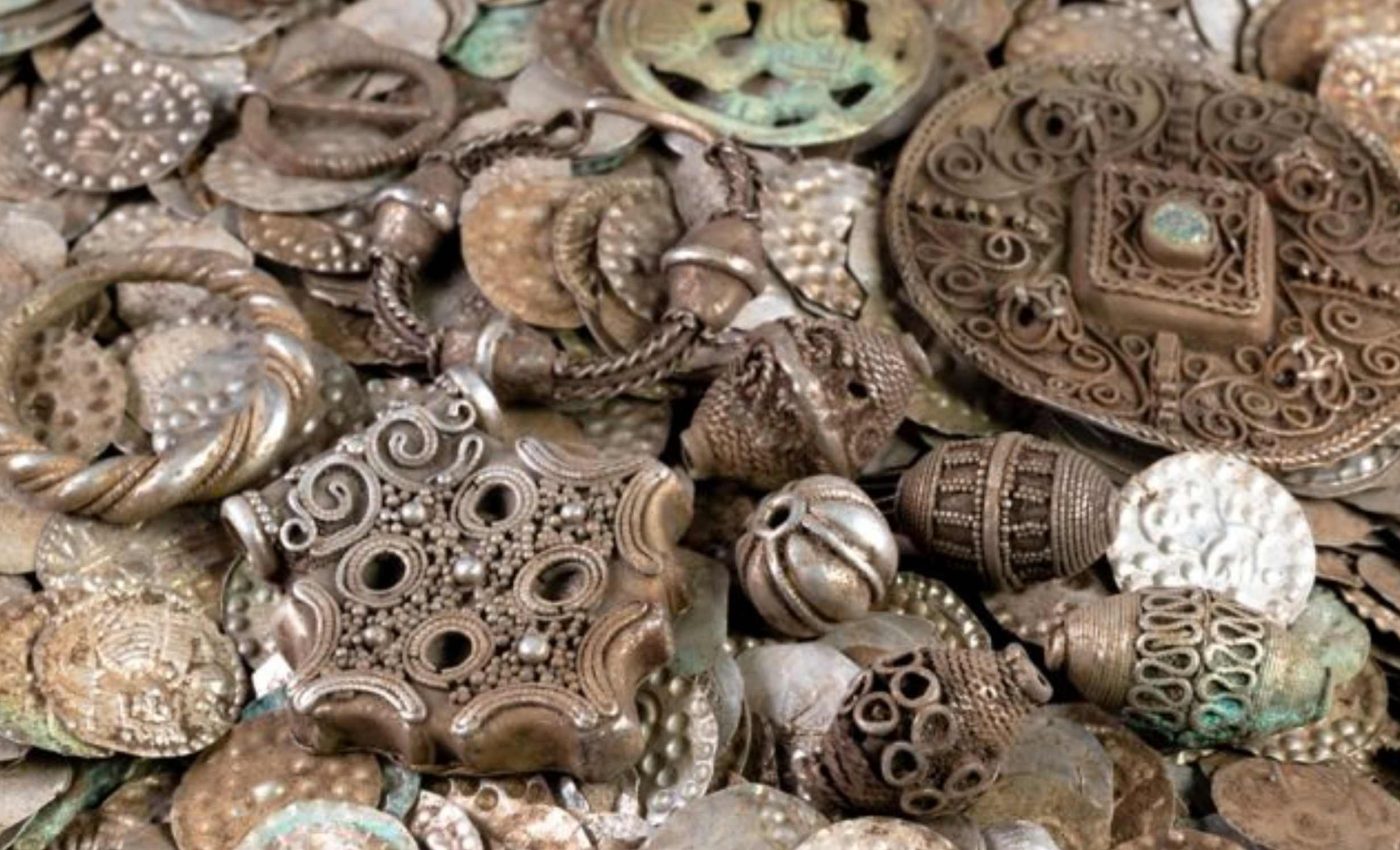
Fisherman looking for worms finds a treasure trove of 20,000 silver coins instead
A fisherman near Stockholm went looking for bait and instead uncovered a medieval hoard hidden for safekeeping. County officials say a decayed copper cauldron held up to 20,000 silver coins, weighed about 13 pounds, and includes pieces stamped KANUTUS.
Most pieces likely date to the 1100s, a century of shifting power in Sweden. The mix of coins and jewelry points to private wealth stashed quickly and never reclaimed.
What are KANUTUS coins?
Sofia Andersson, antiquarian at the County Administrative Board in Stockholm, is coordinating the evaluation of the coins and other silver pieces.
Archaeologists are documenting each artifact and mapping the find spot once the soil is stabilized.
Many coins appear unusually crisp after centuries underground. Thin planchets, uneven cuts, and dotted borders match twelfth century minting styles seen across the region.
Some coins show a crowned ruler and the Latin name KANUTUS. That label ties many pieces to King Knut Eriksson, who reigned in the late twelfth century.
“This is probably one of the largest silver treasures from the early Middle Ages that has been found in Sweden,” said Andersson.
12th Century Sweden
This century brought hard politics and frequent transitions. Sweden coalesced under ambitious rulers, and coinage became a tool of authority.
Scholars of medieval Swedish coinage describe short lifespans for many issues and periodic recalls that refreshed designs and messages. Rapid recoinage helped rulers control silver quality and tax flows.
Knut Eriksson’s dates, late 1100s in most reconstructions, line up with what archaeologists see in the pot. Coins with his name signal central power finding its footing.
Turmoil also shapes behavior. People hide money when times look risky, then failsafes break if owners die, flee, or lose track of their caches.
KANUTUS coin stamp yields clues
Several pieces depict a bishop holding a crozier, a hooked staff that marks ecclesiastical rank. That icon points to so-called bishop coins made for church authorities.
Church minting in Scandinavia is not a myth. Finds and documents from Trondheim’s archbishopric show clear evidence of ecclesiastical coin production.
A building on one coin may show a church facade. If confirmed, that image would fit a period where sacred and secular authority shared the currency stage.
Iconography helps narrow dates when inscriptions are partial or clipped. It also tracks who controlled mints and why designs shifted.
From law to lab
Sweden’s law requires finders to report ancient finds promptly to the County Administrative Board or the police. The state can redeem such finds and pay compensation once experts assess value and context.
That system protects context first. Archaeologists can then lift, conserve, and catalog objects without losing the story written by soil layers and positions.
Conservators will clean the silver mechanically and chemically, test corrosion products, and stabilize fragile edges. Each step is tracked so future researchers can revisit methods and results.
After cataloging, curators match types, weights, and dies to known series. That work connects the pot to mints in Sweden and abroad.
What the inscriptions reveal
KANUTUS is Latin for Knut. On medieval coins, Latin made a small object speak across borders and courts.
Letter forms, pellet borders, and stylized portraits can tie a coin to a specific workshop. When die matches appear, coins can even be linked to a single engraver’s hand.
Bishop portraits are useful too. They suggest jurisdictions where churchmen exercised fiscal clout and negotiated with kings.
An image that may show a church could signal a mint’s identity or a local sacred landmark. It also reminds us that coin design carried messages beyond face value.
Why KANUTUS coins matter
Large hoards compress history into a sealed container. They capture a money system at one moment and freeze a network of trade and taxes.
Patterns in this cache may show how silver moved between town and countryside. They may also reveal what people trusted when storing wealth.
Die studies will test whether many coins came from a few late series. If so, that could reflect a rush of recoinage typical of the period.
Results will refine timelines for Knut Eriksson’s monetary reach. They can also show when and where church mints interacted with royal ones.
A story for the ages
Someone knelt in the dirt and filled a pot with silver. That person chose a spot, lowered the cauldron, and covered the hole.
The stash did not return to daylight until a modern hobbyist probed for worms. Chance met law and science, and both did their part.
Swedish authorities withheld the exact site to prevent looting while fieldwork continues. That caution protects the data and the landowner.
When the study phase ends, the coins will likely enter a public collection. People will see them, and the records will remain open for researchers.
—–
Like what you read? Subscribe to our newsletter for engaging articles, exclusive content, and the latest updates.
Check us out on EarthSnap, a free app brought to you by Eric Ralls and Earth.com.
—–













